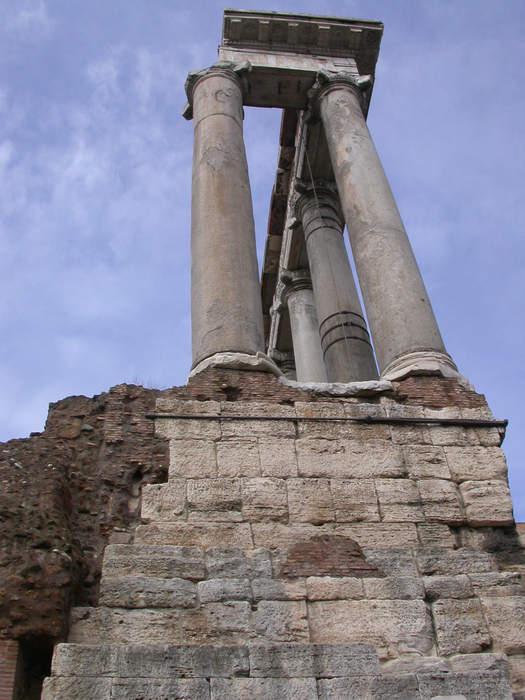Rome - the Roman Forum
Our first day in Rome, we decided to take the bus that
went into the old city
until we saw some old stuff.
This didn't take long. It so happened that we ended up at the Roman
Forum. The forums of Rome were the city center in Rome's height. This
is where votes were taken, congresses held, and speeches given. This
is where Caesar's body was taken to inform the people of his
assassination, and where the column marking the center of the Roman
Empire once stood.
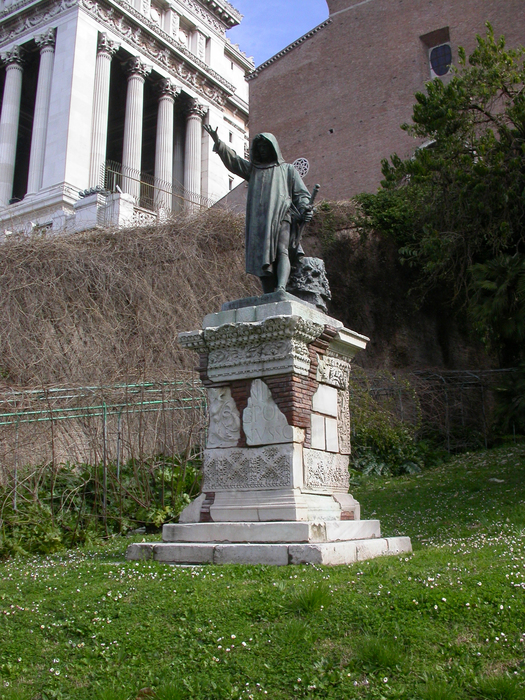
One thing we noticed immediately was the crappy repair job on
this pedestal. A closer look, though, shows that at least some of
the brink work is the very thin bricks characteristic of the
Imperial age of Rome, around the 1st-3rd
centuries AD. The original marble pedestal probably dates to the
Republican era, around the 1st century BC. Rome is full
of examples of repair and re-use through the ages. You are
surrounded by the impression that this land has had a living,
thriving city on it for over 2500 years.
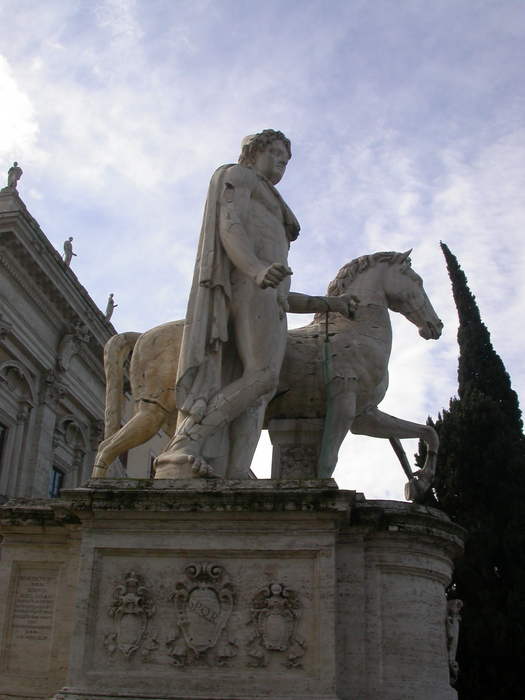
The Piazza del Campidoglio leads to the Forums, and is
flanked by massive twin statues of Castor and Pollox, each with a
horse. Notice the struts holding the leg of the horse and the arm
of Castor in place. These statues date from a time when they had
not quite figured out how to keep the legs in place without struts
to hold them. They were originally in the Temple of Castor and
Pollux, which dates to 496 B.C.
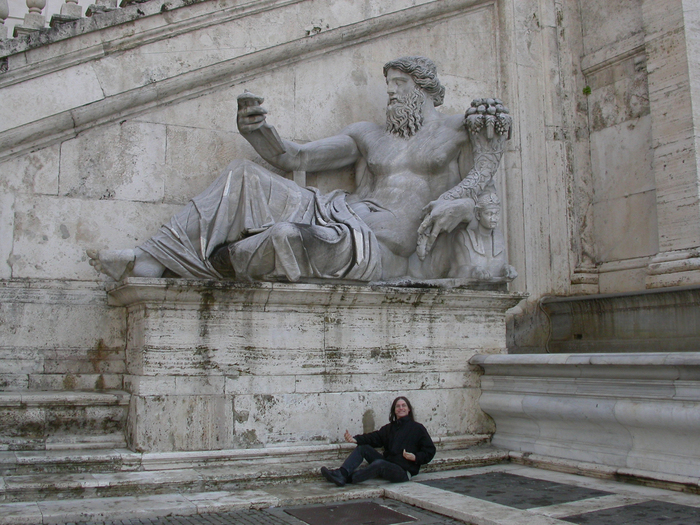
Enormous statues of another god-like figure are on the other
end of the Piazza. Eric attempts to provide some
perspective.
No one seems to know or care who this statue depicts. It (and
its twin, facing the opposite direction and on the other side of
the entrance to this building) is in the drawings for the original
plans for the Piazza, conceived by Michaelangelo.
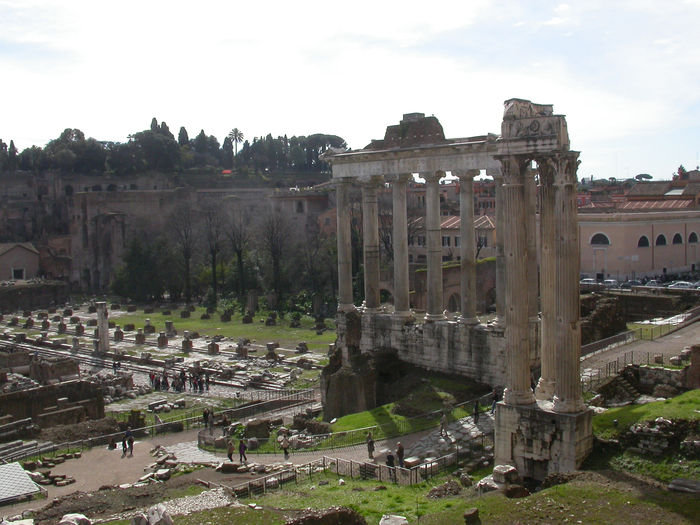
The Roman Forms are still under active excavation. One can get
a sense of the grandeur of ancient Rome as you walk down the Via
Sacra, some of it still paved with the original Roman stones.
Several columns from the Temple of Saturn are in the foreground.
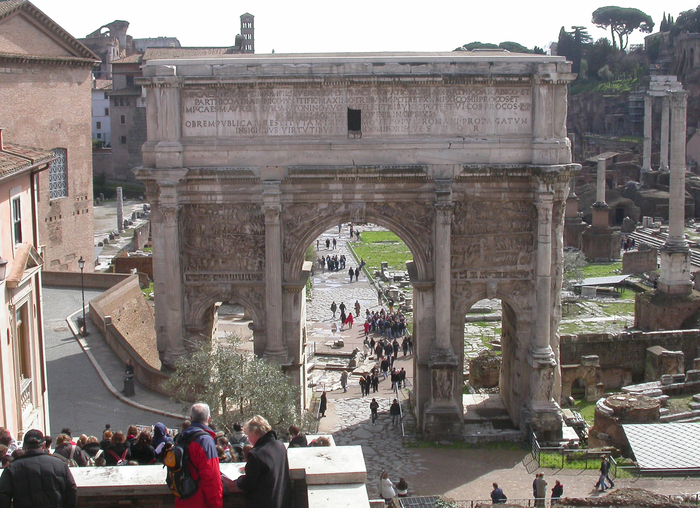
The entrance to the Forums is marked by the Arc of Septimus
Severus. This archway was erected in 203 AD to celebrate the Roman
victory over the Parthians, the Arabs, and the Assyrians.
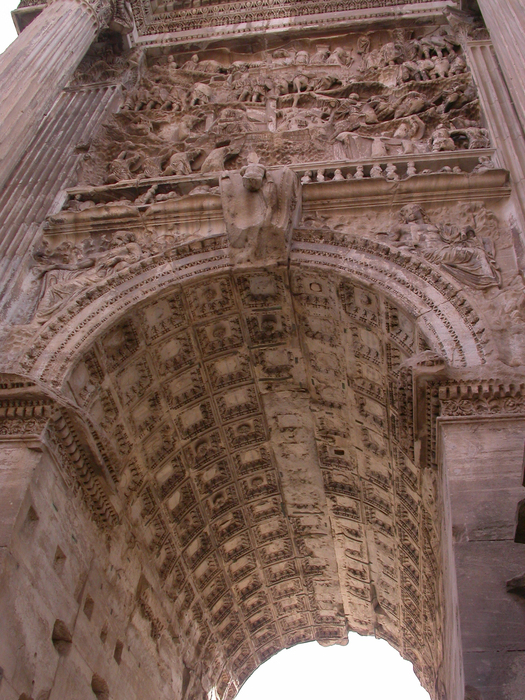
It retains much of its detailed carvings, although the soldier
on the keystone retains only a torso. The carvings depict stories
from the wars that the Arc commemorates.
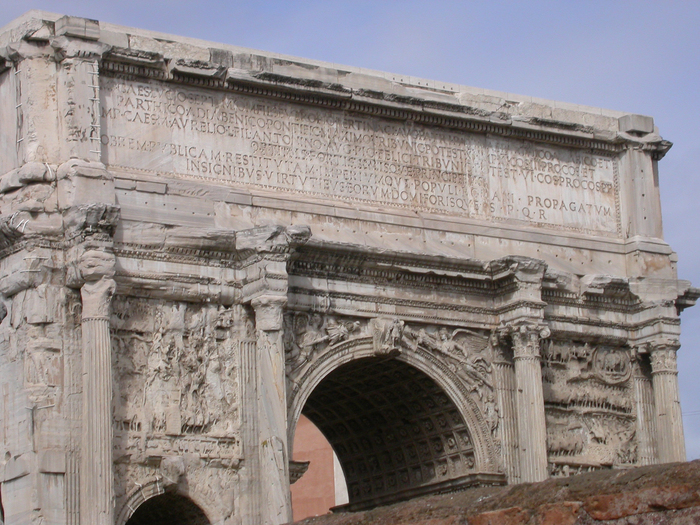
The back of the arc is equally detailed.
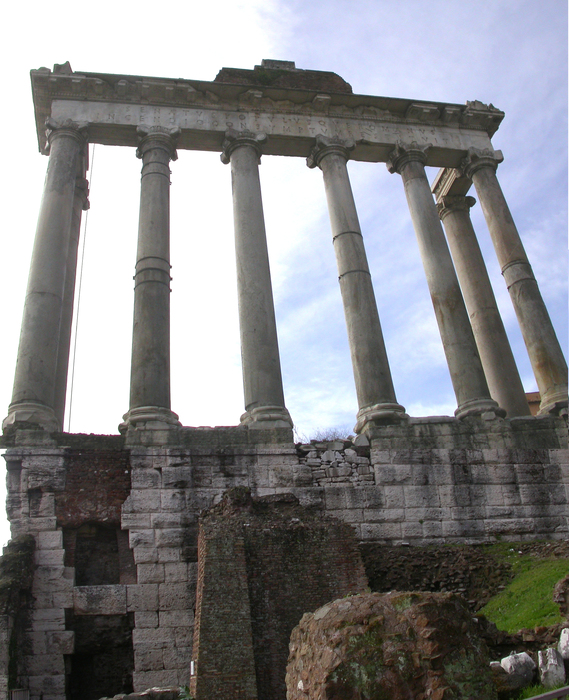
Next stop down the way is the Temple of Saturn. The foundations
for this temple were laid around 500 B.C., making them the oldest
surviving foundations in the Forum. The columns and bits of roof
that remain are from the third reconstruction of the temple,
around 290 A.D. (it had been rebuilt after being burned by the
Gauls in the 4th century B.C.).
The interior of the temple contained a wooden statue of Saturn,
filled with oil and clothed in linen. The statue was only
uncovered on December 17th, Saturnalia.
Saturn was the god of agriculture, but over time as offerings
to Saturn changed from grain, wool, and oil to gold and silver
bars, he became the god of wealth. The empire's reserves of gold
and silver were stored within this temple, as were the official
scales for the weighing of metals.
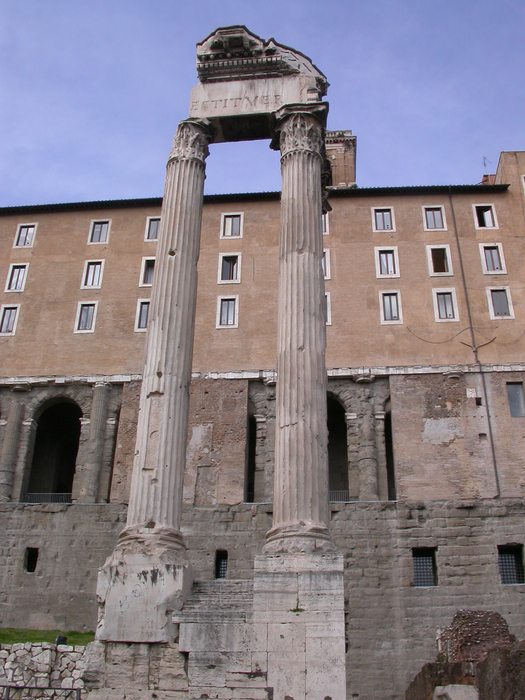
More columns, of a different style, on the other side of the
aisleway.
A side view of the columns. Note the carved flowers far
overhead, around the roof of the temple.
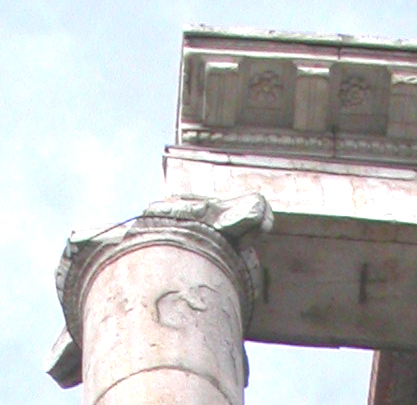
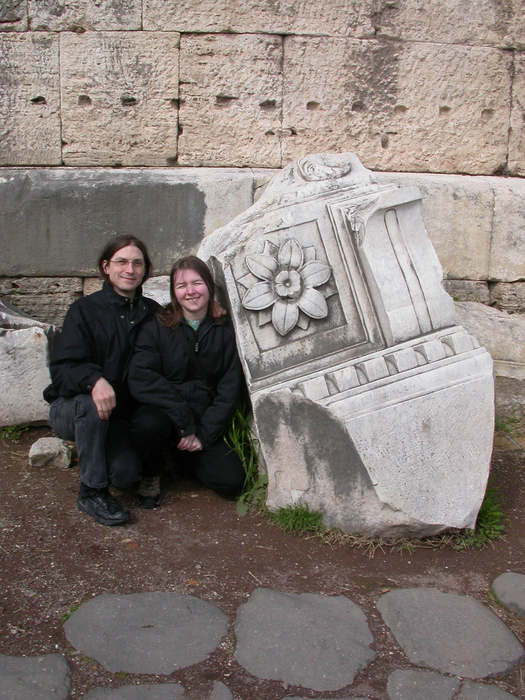
Eric and Ace pose by a piece of the roof that has fallen to the
ground. This piece gives a feel for the size and intricacy of the
temple.
Note the large, flat stones in the foreground. These are part
of the original Roman roads.
The 2500 year-old foundation is in the background.
next









